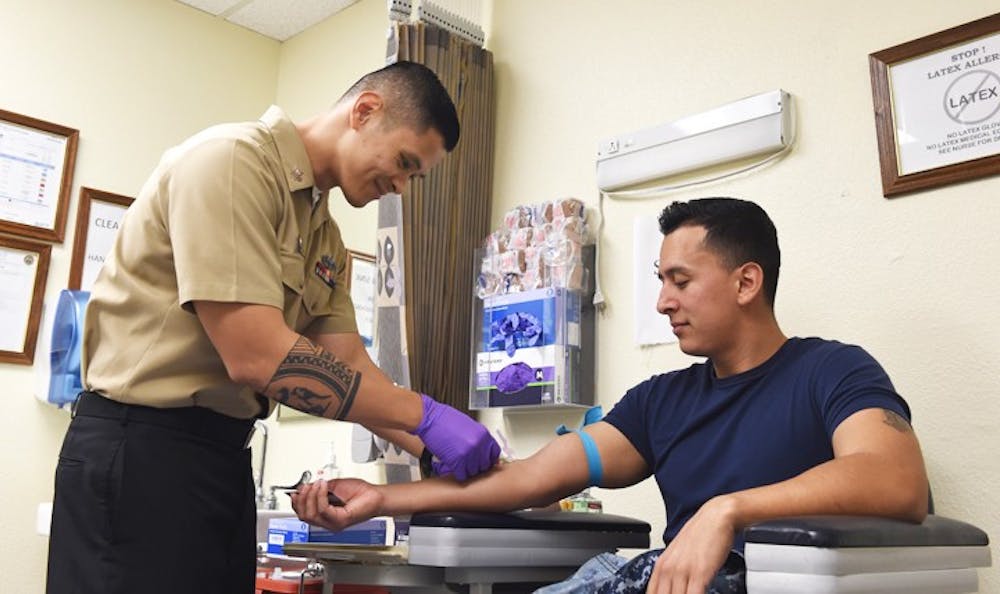Through a $5.1 billion grant given by the National Institutes of Health (NIH), Mechanical Engineering Professor Jeff Wang and his research team are beginning to create a device that can test patients for gonorrhea and detect whether the strain has developed antibiotic resistance. Wang is a core faculty member at the Institute for NanoBioTechnology (INBT).
Like most STDs, gonorrhea is spread through vaginal, anal or oral sex. Pregnant mothers with the disease can also transmit the disease to children during birth. Left untreated in women, gonorrhea can cause pelvic inflammatory disease, which can damage fallopian tubes and potentially cause infertility. In addition if the infection spreads to the blood, it can cause disseminated gonococcal infection (DGI), a life threatening condition that is characterized by arthritis, tenosynovitis (the inflammation of tendon sheath) or dermatitis (inflammation of the skin).
Nowadays some gonorrhea patients can be treated with a one time injection of ceftriaxone or a single dose azithromycin by mouth. However, other treatments are needed for different strains of the infection, which is why the diagnosis of gonorrhea is extremely important.
In a press release, Wang discussed how he hopes a new device can help diagnose gonorrhea.
“Our diagnostic tool will help physicians personalize treatments to individual infections rather than using the current uniform approach, which is thought to significantly influence antimicrobial resistance,” he said. “The device analyzes gonorrhea’s phenotype, or observable characteristics and behaviors of an organism, and specific DNA markers to detect its antimicrobial susceptibility. The results will tell the physician if a patient is infected, and if so, which medications are best suited for treatment and the minimum amount needed.”
Charlotte Gaydos, a professor of Medicine at the School of Medicine and director of the Hopkins Center for the Development of Point-of-Care Tests for Sexually Transmitted Diseases, commented on the power of this research.
“This device is a game changer because knowledge is power... receiving results right away and knowing resistance susceptibility allows us to create precision-directed therapy,” Gaydos said. “Testing can also identify if antibiotics previously recommended by the Centers for Disease Control, but not currently, will work. This means we can save some of the stronger medications for when they are really needed.”
It is extremely vital that this device brings results quickly due to the severity of some of the possible effects of gonorrhea. Current methods of diagnosis can take between 24 and 48 hours, and many patients tested choose to leave facilities before receiving results, increasing the likelihood of further spread. Wang’s device could cut wait times down to about an hour, so treatment for the disease can begin promptly.
Previously known as “the clap” in medieval times, the earliest records of gonorrhea date back to England in 1611, when parliament passed a law in order to curb the spread of this sexually transmitted disease (STD).
Historians still debate the meaning of the original name: Some claim that it came about due to the “clapping sensation” an infected person would feel when urinating, while some believe it came from the French brothels known as les clapiers. Others even argue that the name came about because infected males had to have their penis “clapped” on both sides in order to remove pus and discharge.
While early treatments for gonorrhea involved mercury, antimony, arsenic and other metals, the use of antibiotics to treat this disease finally came about in the 1940s. The most common ones in the ‘40s included sulfur compounds such as sulfanilamide and sulfapyridine.
This was the standard treatment for about four decades, until it was discovered that some gonococcus strains had become resistant to these antibiotics.
According to the Centers for Disease Control and Prevention (CDC), there are approximately 820,000 new gonococcal infections in the United States alone each year. Both men and women are vulnerable, and more than half of new cases reported are among people ages 15-24.
Clarification: This article has been edited to reflect that Professor Jeff Wang is a core faculty member at the Johns Hopkins Institute for NanoBioTechnology (INBT).





